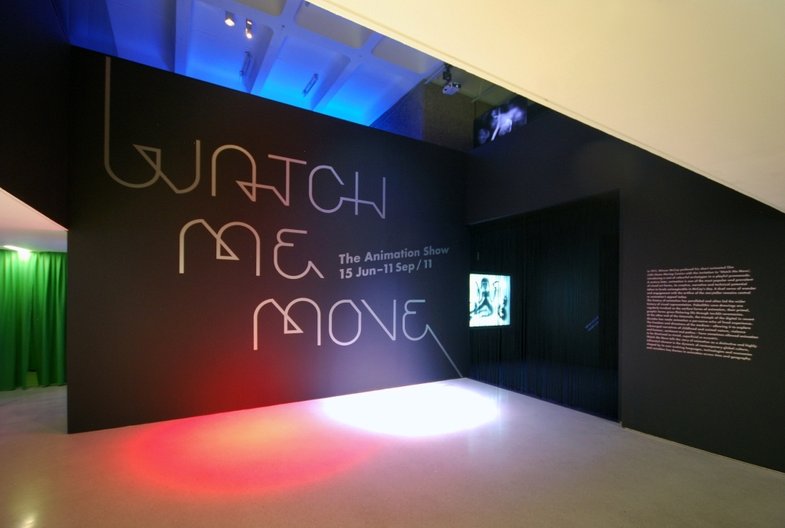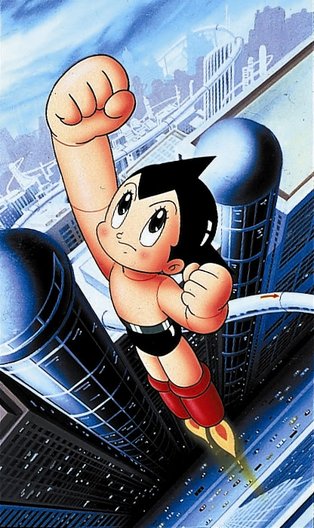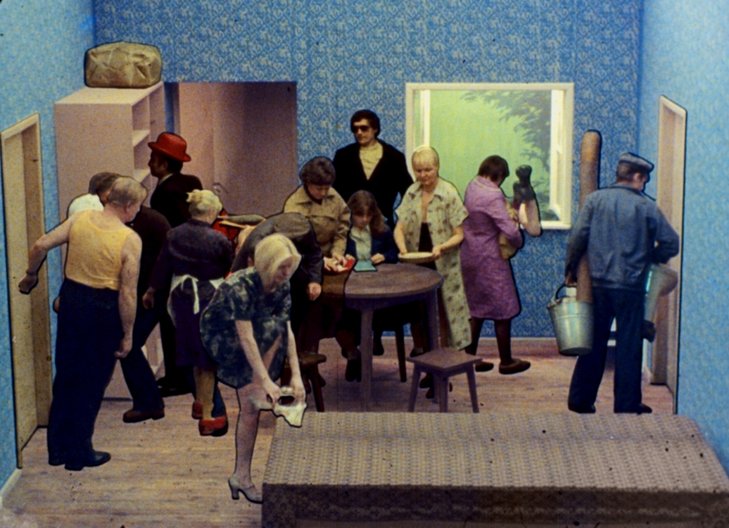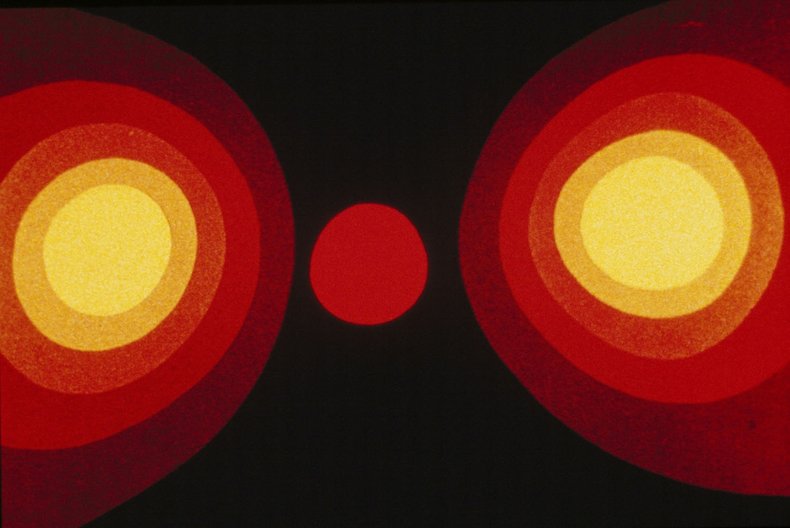12 August 2011
by Kendall Martin-Robbins
It’s your last month to see the Barbican’s Watch Me Move: The Animation Show!
The charm of this exhibition is its ability to capture the interest of a variety of visitors – children, parents, animators, artists, comic book collectors and just anyone who enjoys a good animated film. Importantly, it is the most extensive show of the history of animation ever staged and reveals the impact of animation on everyone. It presents the ways animation has brought characters to life, told millions of stories and worked as varying and expressive medium for artists. It tells the story of the history of animation and how technology and art are continuously merging to take us deeper into the unknown of fantasyland.
The 170 exhibits are dramatically presented in dark rooms with shadows playing on walls as though you were stepping into one of the ominous stories, while the small screening booths make for romantic viewing. Iconic figures from childhood dance across screens ready to be introduced to some one for the first time, while lesser-known visions by artists and independent film-makers unearth the extent of animation’s abilities and artistic endeavours. And every comic book enthusiast will be overwhelmed to see an extensive display case of figurines representing comic book characters throughout the years. Apparently, if each clip displayed were watched in its entirety it would take the whole day to view the exhibition. I’m not sure if this includes the in-house cinema they’ve built showing 3-4 full length animated films a day ranging from Fantastic Mr. Fox to Ghost in a Shell. I know I certainly need to see it a second time to take in the whole experience and breadth of 150 years of animation.
I've asked Juliette Desorgues, who worked as the exhibition assistant on the show, a few questions to get learn a bit more about the how the show came to be.
The reach of animation is global and spans generations. This was obviously a consideration in the curation – did the team and Greg Hilty have any issues finding this balance?
Well yes animation permeates our culture today – advertising, TV – and in the past, animation has been just as important. We decided however to structure the exhibition thematically (Apparitions, Characters and Superhumans, Fables and Fragments, Structures, Visions) rather than chronologically – this was a way of avoiding falling into the trap of dangerously omitting otherwise historically significant films. It wasn’t easy!
What was it like working with Chezweitz and Roseapple? In addition to tackling the technical issue of displaying hundreds of films, they also managed to transfer the mise-en-scene of the animation into the atmosphere of the exhibition design. Was the installation quite a difficult feat? Were there any dramatic last minute changes as it all went up?
Chezweitz and Roseapple were approached for their experience with working with film. Indeed, the big challenge with this exhibition was how deal with the sheer number of films – both spacially and curatorially. This is why no one has ever done it possibly before!
Our groundfloor space is not infinite but we also had to think about how create an environment that made the viewing experience for visitors as enjoyable as possible. Watching over 100 films in the same simple way ie bench + screen would, I think have killed anyone. The designers managed thus to create a true and diverse cinematic space from ‘popy’ encounters with more mainstream films in the Characters and Superhumans to more intimate ones with films that are more challenging in content and form such as those in Fables and Fragments where we created sound booths for each films.
And there are always last minute changes but nothing too disastrous this time round. It is indeed one of the advantages of working with film: you know exactly what to expect.
What was the reception of lenders to the concept of the exhibition? Were they excited to give the rights to their pieces to be included in such a large history of animation, or were there clashes between the different styles/fields of animation?
Overall artists, production studios and institutions were very enthusiastic. There has never been an exhibition of this type, a homage to the importance of animation since its invention. The exhibition indeed aims to show that animation is not, as many consider it to be, a medium for children or advertising, but in fact a powerful and hugely complex one in itself, in the same way that painting sculpture, film and photography as always been perceived. It is indeed a very unusual and new concept to show films within an exhibition/gallery context; one that the Barbican Art Gallery has been known to do often (Surreal House).
And just for fun –which was your favourite animation exhibited and why?
My favourite film has to be Martin Arnold’s Alone. Life Wastes Andy Hardy. Arnold is a Viennese independent filmmaker who is very much interested in space, time and, to some extent, psychoanalysis. His work is characterized by an obsessive reworking of found footage by fast-forwarding, rewinding, pausing each sequence. In this way he manages to expose latent narratives from within the familiar films – sexual desire and repression.
Another personal highlight is Stan Brakhage’s Dante Quartet, shown on 16 mm, as well as original film strips used for the final work. His method revolutionized the way we think about film. Indeed, he painted (scratched, rubbed…) directly onto the film stock, to create a collage of painterly masterpieces in the same manner as American Abstract Expressionist painter Jackson Pollock.
And of course any other good anecdotes or anything that you want to say for our blog!
Come and see the show! It is truly a rare opportunity to be able to see old classics alongside avant-garde often forgotten or unknown filmmakers and works. Quite a few of the films have been digitized especially for the exhibition and many of the objects have never been seen in the UK before, It will tour first to the Glenbow Museum in Canada and then to Asia after that for a few years.
The exhibition was curated by Greg Hilty of the Lisson Gallery and designed by Chezweitz and Roseapple and runs until 11 September 2011. For more information about the accompanying talks and events, check out the Barbican website.




